Filter by
You must be a CTBUH Member to view this resource.
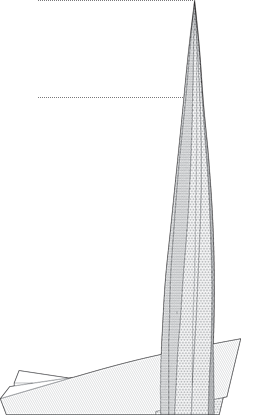
Lakhta Center
Gazprom Tower
Building
Completed
2019
Office
Concrete-Steel Composite
LEED Platinum
462 m / 1,516 ft
87
3
1935
40
8.3 m/s
143,400 m² / 1,543,545 ft²
You must be a CTBUH Member to view this resource.
You must be a CTBUH Member to view this resource.
Proposed
Construction Start
Completed
Usually involved in the front end design, with a "typical" condition being that of a leadership role through either Schematic Design or Design Development, and then a monitoring role through the CD and CA phases.
The Peer Review Engineer traditionally comments on the information produced by another party, and to render second opinions, but not to initiate what the design looks like from the start.
The Design Engineer is usually involved in the front end design, typically taking the leadership role in the Schematic Design and Design Development, and then a monitoring role through the CD and CA phases.
The Peer Review Engineer traditionally comments on the information produced by another party, and to render second opinions, but not to initiate what the design looks like from the start.
The CTBUH lists a project manager when a specific firm has been commissioned to oversee this aspect of a tall building’s design/construction. When the project management efforts are handled by the developer, main contract, or architect, this field will be omitted.
Other Consultant refers to other organizations which provided significant consultation services for a building project (e.g. wind consultants, environmental consultants, fire and life safety consultants, etc).
These are firms that consult on the design of a building's façade. May often be referred to as "Cladding," "Envelope," "Exterior Wall," or "Curtain Wall" Consultant, however, for consistency CTBUH uses the term "Façade Consultant" exclusively.
Material Supplier refers to organizations which supplied significant systems/materials for a building project (e.g. elevator suppliers, facade suppliers, etc).
You must be a CTBUH Member to view this resource.
Usually involved in the front end design, with a "typical" condition being that of a leadership role through either Schematic Design or Design Development, and then a monitoring role through the CD and CA phases.
The Design Engineer is usually involved in the front end design, typically taking the leadership role in the Schematic Design and Design Development, and then a monitoring role through the CD and CA phases.
The Peer Review Engineer traditionally comments on the information produced by another party, and to render second opinions, but not to initiate what the design looks like from the start.
The Design Engineer is usually involved in the front end design, typically taking the leadership role in the Schematic Design and Design Development, and then a monitoring role through the CD and CA phases.
The Peer Review Engineer traditionally comments on the information produced by another party, and to render second opinions, but not to initiate what the design looks like from the start.
The CTBUH lists a project manager when a specific firm has been commissioned to oversee this aspect of a tall building’s design/construction. When the project management efforts are handled by the developer, main contract, or architect, this field will be omitted.
The main contractor is the supervisory contractor of all construction work on a project, management of sub-contractors and vendors, etc. May be referred to as "Construction Manager," however, for consistency CTBUH uses the term "Main Contractor" exclusively.
Other Consultant refers to other organizations which provided significant consultation services for a building project (e.g. wind consultants, environmental consultants, fire and life safety consultants, etc).
These are firms that consult on the design of a building's façade. May often be referred to as "Cladding," "Envelope," "Exterior Wall," or "Curtain Wall" Consultant, however, for consistency CTBUH uses the term "Façade Consultant" exclusively.
Material Supplier refers to organizations which supplied significant systems/materials for a building project (e.g. elevator suppliers, facade suppliers, etc).
2021 CTBUH Awards
2021 CTBUH Awards
2021 CTBUH Awards
22 January 2019 - CTBUH News
17 January 2018 - CTBUH News

23 September 2020
Ahmad Abdelrazaq, Vladimir Travush, PhD, Alexey Shakhvorostov, PhD, et al., Samsung C&T
The 2020 National Building Code of Canada (NBC) and the 2021 International Building Code (IBC) both include Tall Wood Buildings (TWB) and are hailed as...

08 July 2019
The 405-meter One Tower in Moscow is set to become one of the tallest residential buildings in Europe, the deputy mayor of Moscow announced as...
The Lakhta Center constitutes the epicenter of St. Petersburg’s Primorsky District, employing a wide range of public functions alongside transportation infrastructure in an effort to anchor a sustainable economic zone. Originally planned for the historic center of the city, the project – then named Okhta Centre – garnered widespread media attention as stakeholders contended with the various impacts it would have on the image of the city. Ultimately, the tower was moved to its present location, adopting a new name and a fresh context to inform the master planned development. The tower will provide space for offices, as well as several public resources, including a planetarium, medical center, performance hall, and a bank.
The theme of the tower's design is that of a lonely spire in a horizontal landscape, with a unique shape informed by concepts of extrusion, torsion, and tension. The building’s designers sought to create an optimal balance between office and public areas, ultimately conceiving a complete community within the building’s walls. Outside of the building, the plan for the surrounding area incorporates greened and landscaped spaces. An open 2,000-seat amphitheater and green promenade with fountains, paths, and benches are all integrated into the design.
Lakhta Center incorporates a number of innovative energy-saving technologies into its design. A double-glazed façade increases the level of thermal insulation, leading to a reduction in heating and air-conditioning costs. Similarly, the premises will be heated using excess heat generated from working technical equipment. To combat the dual effects of extreme height and a harsh winter, an ice formation control system will be implemented to protect the building’s façade and passers-by below from the dangers of falling ice.
2021 CTBUH Awards
2021 CTBUH Awards
2021 CTBUH Awards
2021 CTBUH Awards
2021 CTBUH Awards
2021 CTBUH Awards

23 September 2020
Ahmad Abdelrazaq, Vladimir Travush, PhD, Alexey Shakhvorostov, PhD, et al., Samsung C&T
The 2020 National Building Code of Canada (NBC) and the 2021 International Building Code (IBC) both include Tall Wood Buildings (TWB) and are hailed as...

20 March 2020
CTBUH Research
This research paper undertakes a review of the 2012 report by the Council on Tall Buildings and Urban Habitat, “Tallest 20 in 2020: Entering the...
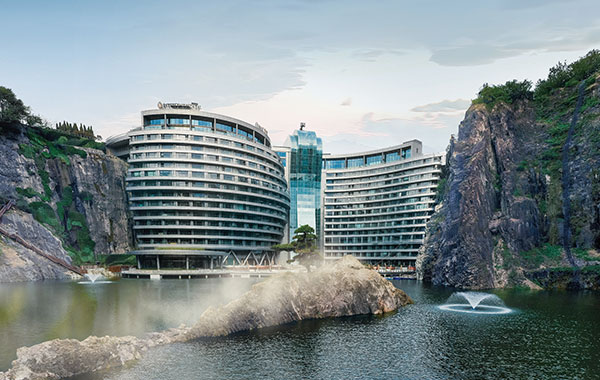
20 March 2020
CTBUH Research
Providing a global overview of tall building development, design and construction, the CTBUH Awards Program and related Tall + Urban Innovation Conference annually survey projects,...
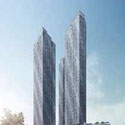
26 October 2015
Ahmad Abdelrazaq, Samsung C&T Corporation
Samsung and the authors’ involvement in these major tall and complex building projects have facilitated the transfer of the technologies and best practices to projects...
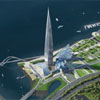
16 September 2014
Peyman Askarinejad, Arabtec Construction LLC
Each supertall building project has its own design challenges and difficulties. The experience with Okhta “O” center which became Lakhta “L” center complex project in...
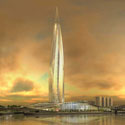
29 April 2011
Philip Nikandrov, RMJM; Kirill Strakhov, Deputy of Yabloko (Apple) Party/Head of Regional Committee on Historical Heritage of Kalininsky District of St. Petersburg
Ever since the project was first announced in 2005, the proposed 396-meter (1299-foot) tall tower of the Okhta Center has been the subject of fierce...
22 January 2019
Check out our monthly predictions based on our industry intelligence to see what trends and milestones will shape the industry in the year to come!
17 January 2018
Check out all of our 2018 Tall Building Predictions, and dive into the full 2017 Tall Building Year in Review data report.
7 September 2017
22 speakers discussed the state of high-rise design & construction at this conference, a partner event between the CTBUH and Samara State Technical University.
13 October 2016
The Council is pleased to announce the Top Company Rankings for numerous disciplines as derived from the list of projects appearing in 100 of the World’s Tallest Buildings.
18 August 2016
CTBUH has released a study that looks at the recent proliferation of twisting towers creating a new generation of iconic buildings throughout the world.
Subscribe below to receive periodic updates from CTBUH on the latest Tall Building and Urban news and CTBUH initiatives, including our monthly newsletter. Fields with a red asterisk (*) next to them are required.
View our privacy policy